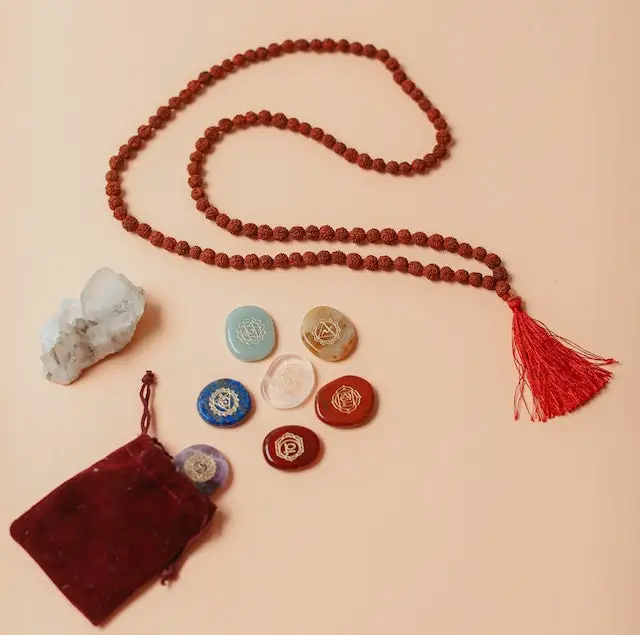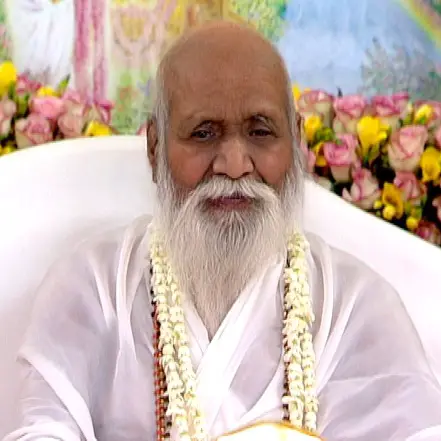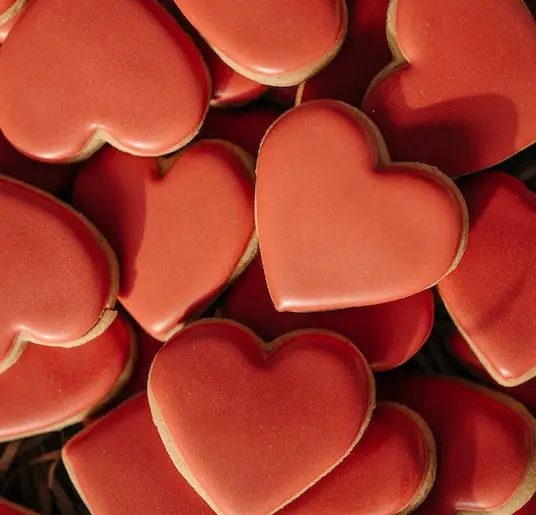Mala beads have been an essential tool in meditation and mindfulness practices for centuries. These beautiful, often handcrafted strings of beads provide both a tactile and visual aid to help practitioners focus their minds during meditation.
In this article we will explore the origins of mala beads, their significance in meditation, the different types available, and how to use and care for your mala beads effectively.

Table of Contents
History of Mala Beads
Origins
Mala beads originated in India over 3,000 years ago and have since spread across various cultures, including Buddhism and Hinduism. They were initially used as a means to keep count of prayers or mantras during meditation.
Use in different cultures
While mala beads are most commonly associated with Hinduism and Buddhism, similar prayer beads are also found in Christianity, Islam, and other spiritual traditions. Each culture has its unique way of using these beads, often incorporating their own symbols, beliefs, and practices.
The Meaning Behind Mala Beads
Significance of 108 beads
Traditionally, a mala consists of 108 beads. This number is considered sacred in Hinduism and Buddhism, as it represents the universe’s wholeness. Various theories explain the significance of 108, including the nine planets’ influence on the twelve astrological signs and the distance between the Earth and the Sun.
Guru bead
The guru bead, also known as the “Sumeru” or “Meru” bead, is the 109th bead on a mala. This bead is not included in the count and serves as a reminder of the spiritual teachers who have guided us on our journey.
Tassel
The tassel at the end of a mala represents enlightenment, symbolizing the connection between the individual and the divine. As the strands of the tassel come together to form a single thread, it reminds us of our interconnectedness with the universe.
Materials Used in Mala Beads
Wood
Wooden mala beads are common, with sandalwood and rosewood being popular choices. These woods are believed to have calming properties, making them ideal for meditation.
Seeds
Rudraksha seeds, native to India and Nepal, are another traditional mala bead material. They are said to have powerful spiritual energy and are often used for their healing properties.
Gemstones
Gemstones are widely used in mala beads for their unique energy and metaphysical properties.
Different gemstones are believed to have specific healing properties and vibrations, which can help users align with their intentions and goals. Some popular gemstones used in mala beads include amethyst for spiritual growth, rose quartz for love, and black onyx for protection.
How to Choose the Right Mala Beads
Intention and purpose
When selecting mala beads, consider your intention and what you hope to achieve through meditation or spiritual practice. Each type of bead carries its own energy, so choose one that resonates with your goals.
Material properties
The material of your mala beads should also be taken into account. Research the properties and energies of different materials, such as wood, seeds, and gemstones, to find one that aligns with your intentions and preferences.
How to Use Mala Beads for Meditation
Mantra meditation
To use mala beads for mantra meditation, hold the beads in one hand and recite your chosen mantra while moving each bead through your fingers. When you reach the guru bead, pause for reflection, then reverse direction and continue reciting your mantra.
Breath meditation
You can also use mala beads to practice breath meditation. Simply focus on your breath while moving the beads through your fingers, counting each breath cycle until you reach the guru bead.
Caring for Your Mala Beads
Cleaning
To maintain the energy and integrity of your mala beads, clean them regularly. For wooden and seed beads, gently wipe with a soft, damp cloth. For gemstones, use a gentle cleanser and water, being mindful of any specific care instructions for each stone.
Recharging
Recharge your mala beads by placing them in moonlight or sunlight, depending on the beads’ properties. You can also use other energy-cleansing methods such as smudging with sage or placing them on a selenite charging plate.
The Benefits of Using Mala Beads
Improved focus
Using mala beads during meditation can help improve focus by providing a tactile point of concentration. The act of moving the beads through your fingers can help keep your mind present and attentive.
Stress reduction
Meditation with mala beads has been shown to reduce stress by promoting relaxation and mindfulness. By connecting with your breath or mantra, you can achieve a sense of calm and inner peace.
Spiritual growth
Mala beads can facilitate spiritual growth by helping you connect with your intentions, goals, and higher self. They serve as a reminder of your spiritual journey and can deepen your meditation practice.
Common Misconceptions about Mala Beads
There are a few misconceptions about mala beads that are important to address. One is that they are solely religious objects. While they have roots in various spiritual traditions, mala beads can be used by anyone seeking to enhance their meditation practice or cultivate mindfulness. Additionally, some may believe that mala beads should never touch the ground. While it’s essential to treat your beads with respect, accidents happen, and you can cleanse and recharge them if they touch the ground.
Conclusion
Mala beads offer a powerful way to enhance your meditation practice and connect with your spiritual goals. By understanding their history, meaning, and proper use, you can harness the power of mala beads to improve focus, reduce stress, and foster spiritual growth. Whether you’re new to meditation or an experienced practitioner, mala beads can serve as a valuable tool on your journey.
Approved Mala Beads
To see our recommended mala beads view our approved products list and best mala beads article.
Mala Beads Frequently Asked Questions
Can I wear mala beads as a necklace or bracelet?
Yes, many people wear mala beads as a necklace or bracelet to keep them close and serve as a constant reminder of their intentions and
See Related Posts

Mantras to Live By

Best Mantras for Exams

Transcendental Meditation Mantras

Mental Wellness Mantras

Tara Mantra Benefits

Numerology and Mantras

Best Morning Mantras

Love Mantras

TV Sitcom Mantras

